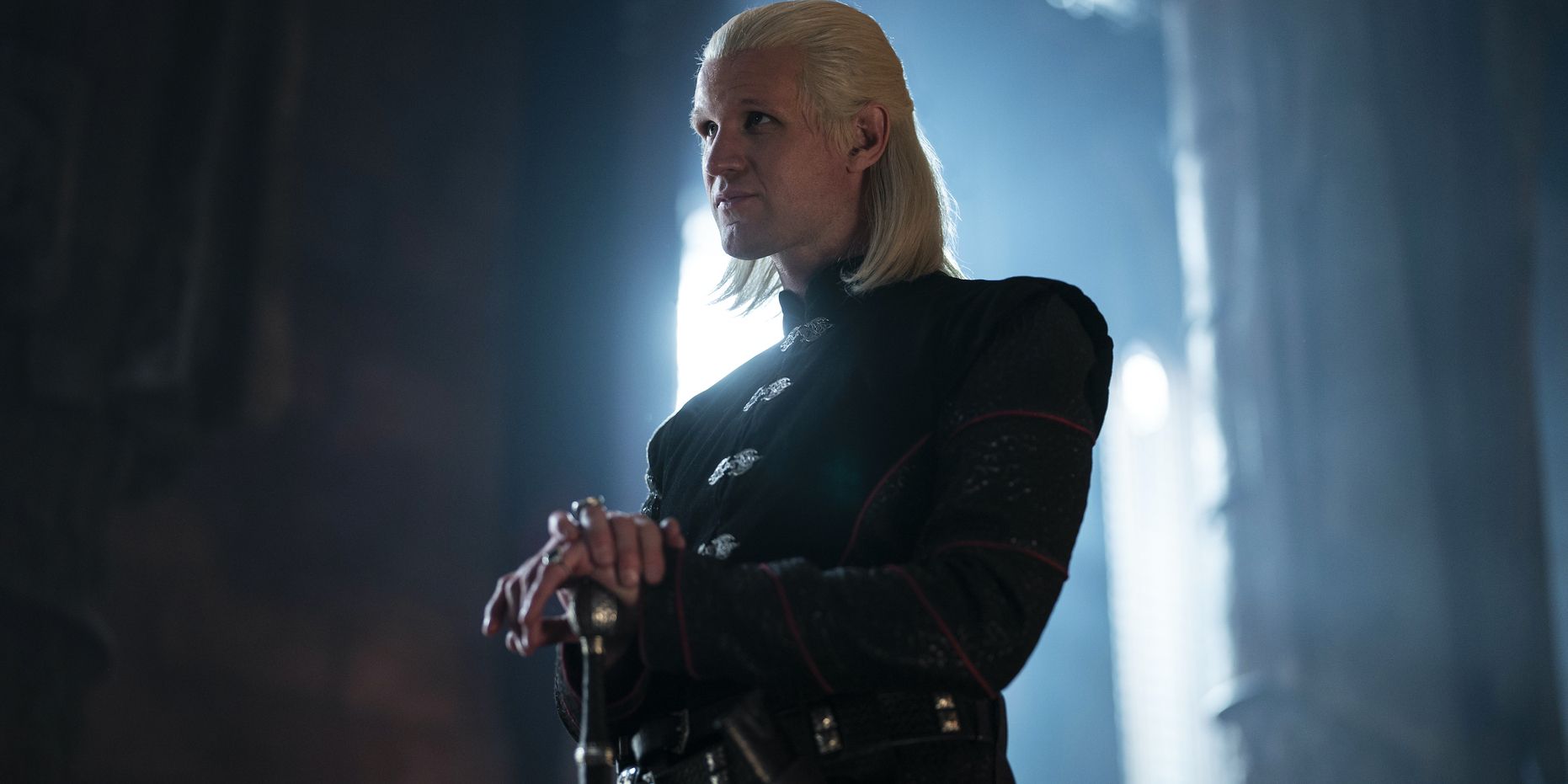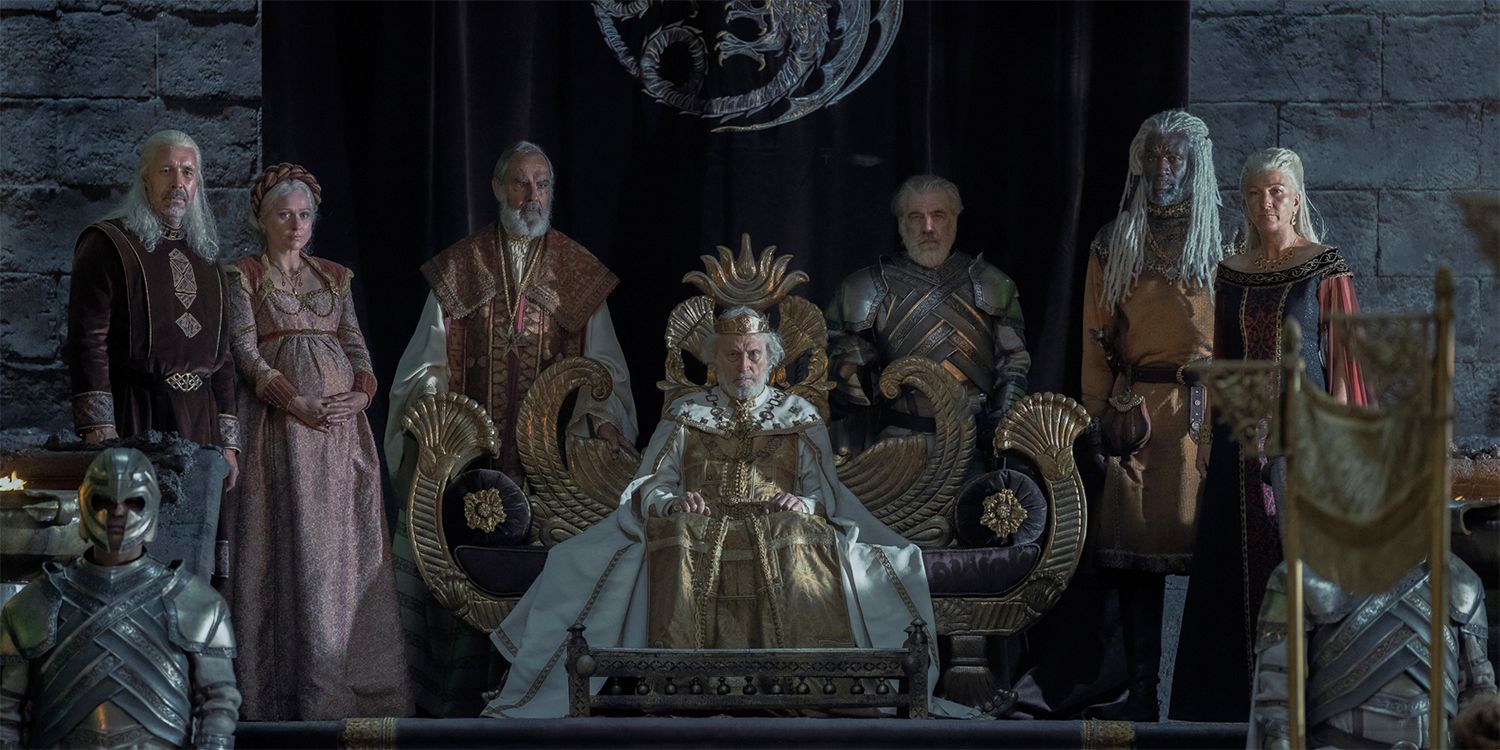House of the Dragon showrunner Ryan J. Condal discusses how the HBO adaptation tackled its source material's multiple unique perspectives. House of the Dragon is primarily based on portions of author George R.R. Martin's 2018 book Fire & Blood, which tells the history of House Targaryen. The prequel series begins more than 200 years before the events of Game of Thrones and chronicles the events leading up to the Targaryen civil war, known as the Dance of the Dragons, as well as the ensuing conflict.
Paddy Considine leads the House of the Dragon cast as King Viserys I Targaryen, the current occupant of the Iron Throne preparing to name his successor. Audiences will also be introduced to more main characters including Prince Daemon Targaryen, played by Doctor Who alum Matt Smith, Princess Rhaenyra Targaryen, played by Milly Alcock/Emma D’Arcy, and Lady Alicent Hightower, played by Emily Carey/Olivia Cooke. With House of the Dragon premiering on August 21, the show's immense cast and creative team have been making the rounds revealing how they brought this crucial period of Westeros' history to life.
During a recent round table interview, Screen Rant and other media outlets had the opportunity to speak to showrunners Miguel Sapochnik and Condal about the process of adapting House of the Dragon to the screen. They were presented with one unique challenge since the source material, Fire & Blood, recounts this period of history from a few drastically different perspectives. Read what Condal said below:
As fun as that Rashomon style of storytelling is, we left that to the book and decided to instead try to define what we thought the objective truth of this actual history was, as we saw it. Certain historians are right and certain historians are wrong; sometimes they all get it right, sometimes they all get it wrong. I think that was the fun of the adaptation; getting to really interplay with the book as a companion piece. I think people who have read the book and watch the series will hopefully be fascinated. "That's interesting how they spun that event," or "George wrote this little seemingly throwaway line, but there's this big thing that happened, because the historians didn't see it or didn't know what actually happened.
Martin's A Song of Ice and Fire saga is told directly through the perspective of a few point-of-view characters, but Fire & Blood employs an entirely different narrative device. The latter is essentially a fictional history book written by an in-universe historian named Archmaester Gyldayn who wrote the account years after the events occurred. Thus, Gyldayn relies on multiple first-hand accounts of the Dance of the Dragons which often contradict one another. Two of Gyldayn's sources for the main story are Septon Eustace, who tends to be more straightforward, and Mushroom the fool, whose account tends to be more scandalous.
Without using a Rashomon style of storytelling, such as The Last Duel did, House of the Dragon can only present a singular version of events. Therefore, Condal and the other writers had to decide what the "objective truth" of this history was and simplify these multiple accounts into one singular timeline, which was probably a wise decision given the inherent complexity of this decades-spanning story. House of the Dragon will likely end up piquing viewer interest in this period of Targaryen history, which can be enriched by reading the multiple accounts presented in Fire & Blood.


